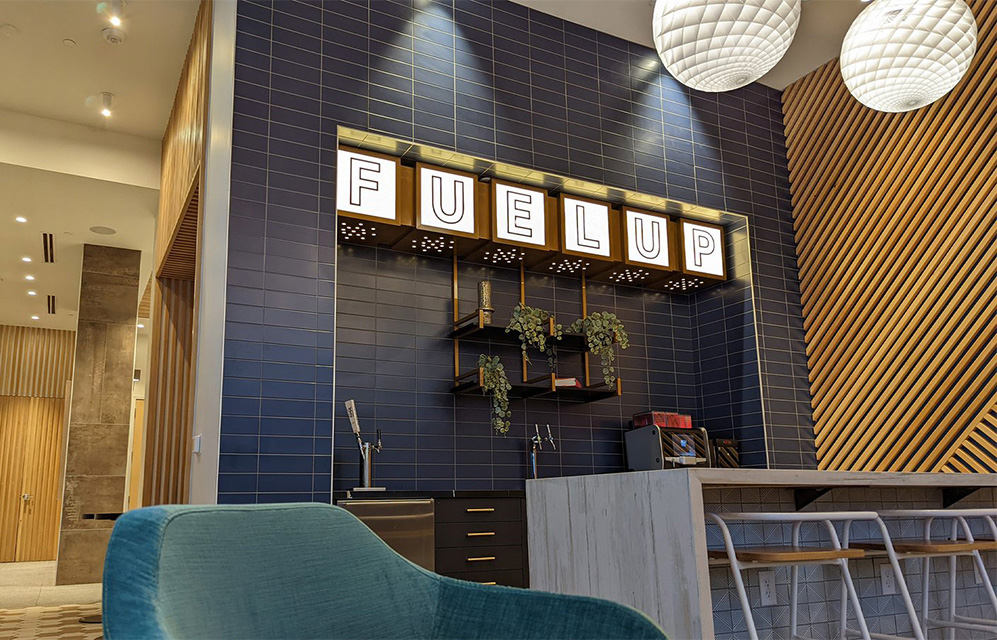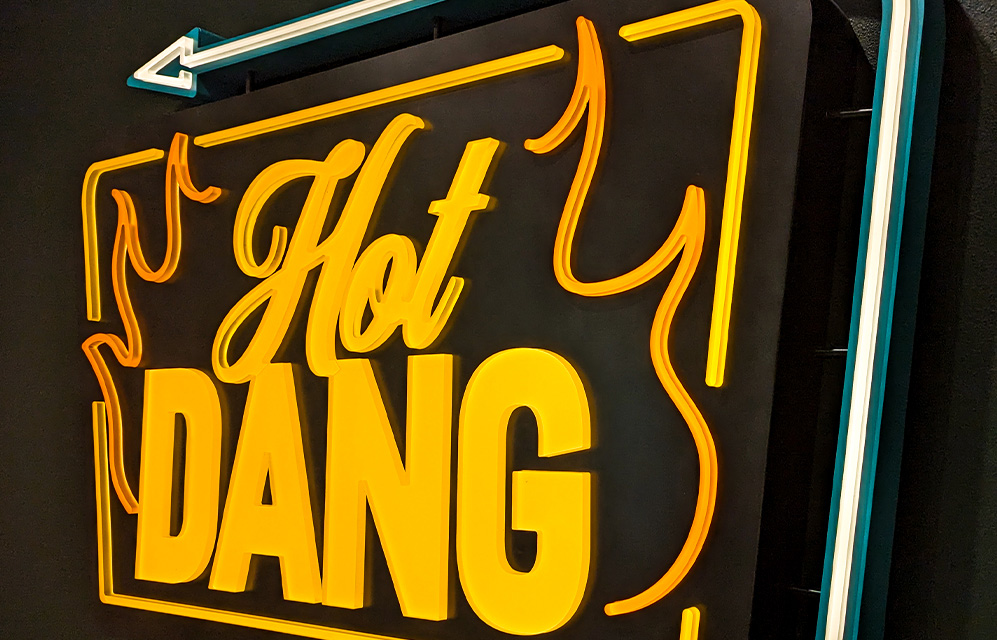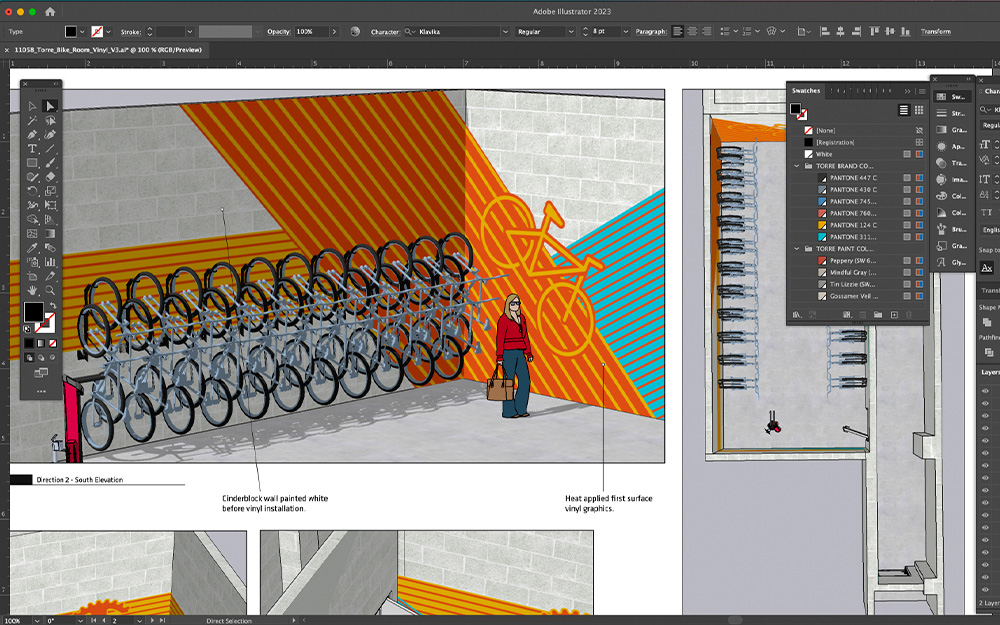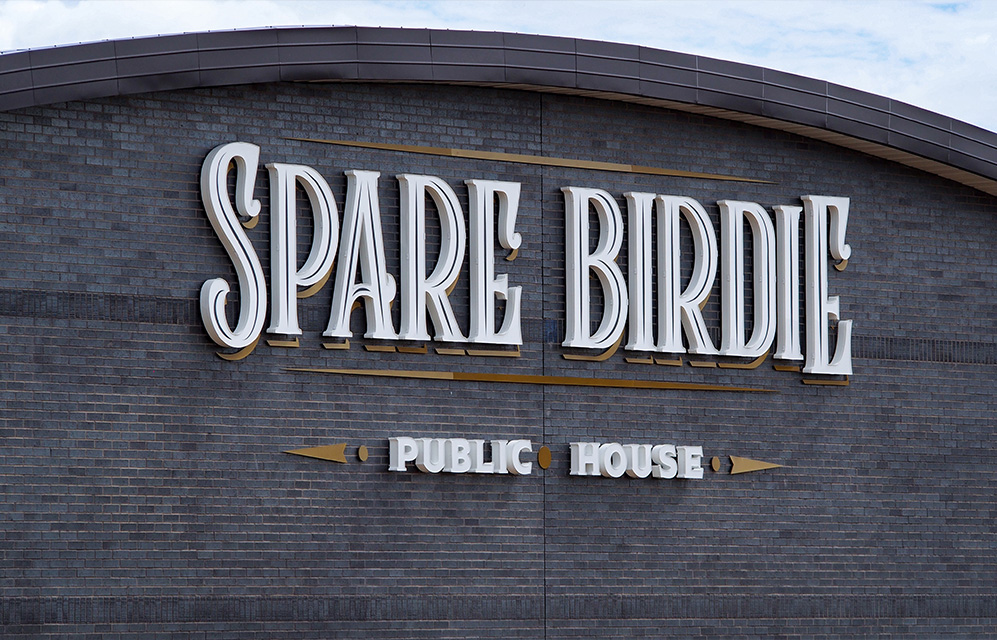
At Studio Dzo, our modus operandi, “Do Good Work”, is reflected in our brand-elevating design and amazing service. Over the last fifteen years as a designer, art director, creative director, owner, and design professor here, I’ve worked with, trained, hired, and fired designers at every level. I’ve learned a lot from the great hires—but even more from the bad.
Bringing on a new team member, especially a designer, is exciting and you and your team should embrace the opportunity and the process.
So just how does a sign shop find and hire great designers? Is there a school somewhere cranking out “Sign Design” graduates or a certification that guarantees they know how to design monuments and pylons? Nope.
Regardless of the number of applicants you do or don’t receive, focus on the quality. Designers know designers, and if your business earns the reputation of being a great place to work, much like my shop, you’ll find that you will have designers reaching out to you in hopes of joining the ranks.
There are also a few Dos and Don’ts you should keep in mind when you’re ready to hire a designer.
Do: Make It Easy.
You aren’t the CIA, so there’s no need to make it difficult for anyone hoping to work for you to learn about who you are, what you do, or what compensation you’re offering. Write a clear and comprehensive, but concise, description of the role and its day-to-day responsibilities, along with the salary range and any benefits you’re offering.
Job seekers today want more than a paycheck. I’m not talking about healthy snacks in the breakroom or video games in the lobby. Skilled candidates want to know that the place they’re applying to has values and integrity.
Your company’s values and purpose should be easy to find on your website. It should show examples of the work you’ve completed and the members of your staff.
It amazes me how many successful sign shops have severely outdated or permanently “under construction” websites or rely on social media sites to market themselves.
Don’t require applicants to complete forms, submit lengthy cover letters, or share professional references. You’ll find the strongest talent when you simply ask for a link to their design portfolio.
If they don’t have a portfolio, don’t waste your time interviewing them. If you want to dial it up a notch, ask them to also submit their resume.
But remember, the road to sign design is an unconventional one. Don’t expect a four-year degree and ten years of sign design experience. When you make the application process easy, you make it easy for everyone—especially yourself.

Do: Gravitate Towards “Generalists.”
It might be tempting to focus on hiring someone who is a wizard with a particular software like SketchUp or AutoCAD.
But what happens when the work changes or you need someone to help out when you’re flooded with new projects? When you narrow your focus, you lose sight of the big picture.
Specialists tend to be weak in more areas than they’re great. You might soon find yourself trying to find work for them to do because you can’t assign the work you have.
Instead gravitate toward design generalists. Look for someone who has a good portfolio with a breadth of work that shows a strong sense of design fundamentals—concept, composition, color, and typography. Someone with a wide range of design work is likely to have seen enough to quickly and easily grasp the specifics of sign design and fabrication.
When you need to shift with new projects or design trends, a solid all-around designer will prove to be the valued asset you can count on.
Do: Sweat the Small Stuff.
We all want a candidate that maxes out the talent, work ethic, and personality skill charts. The reality is that some skills can be learned and others people just possess. Three “soft” skills I focus on are: (1.) the ability to follow instructions, (2.) communication, and (3.) punctuality.
The ability to follow instructions is a simple skill that reveals itself quickly in the hiring process. Even with very simple application instructions, like “submit your resume and a link to your design portfolio,” I’ve received numerous responses with no resume, photo attachments, links to Instagram accounts, etc. Did you even read the job post?!?
Communication is essential to design. If, when, and how someone replies to your emails will give you a good idea of how they are to work with. Punctuality, or the lack of it, shows whether someone respects and values time.
Sign projects have deadlines, and if a candidate can’t bother to be punctual during the hiring process, don’t expect that to change if you bring them on.

Don’t: Equate “Being a Designer” to “Knowing Software.”
Each sign project comes with a series of challenges that require thoughtful and intentional design solutions. Designers are not “pixel pushers;” they’re problem solvers. If you think you only need someone who knows their way around the design software, you’re wasting your time and money.
When hiring a designer, know that you’re bringing on a strategist, problem-solver, and creative thinker. Give them the freedom, time, and capacity to ponder, explore, and develop the great work that you need from them.
Unless you’re also a designer, your shop won’t be winning any design awards if your designers are being art directed by you, your salespeople, or your clients.
Your design team and the design process require open and collaborative discussion. Explain the project’s challenges and goals and trust that your designers are capable of doing what you pay them to do.
If you’re looking to hire someone to bring your ideas to life by being your “pixel pusher,” there are plenty of freelancers that will gladly take the easy money and let you do all the thinking and problem-solving.
Don’t: Require Design Skills Tests.
The trend of asking designers to perform a “design skills test” has been around forever. Not only is it insulting (demonstrating a lack of trust and professionalism), but you’re also asking them to do free work.
Design is a skilled position requiring education, practice, and experience. Questioning whether or not a candidate can do the work that’s showcased in their portfolio only shows your lack of knowledge and experience.
Skills tests don’t prove anything. If you need to understand how someone works, just ask them to share a source file of something they’ve completed recently. If you don’t know what to look for, ask a designer on your team or any designer you might know to review it.
Digging into source files is a simple way to see if someone understands how to build out a production file and the cleanliness of their work. You aren’t requiring them to do any extra work and any designer you would consider hiring should have files ready to share.

Don’t: Seek a Unicorn.
Many design skills and solutions are applicable across multiple industries and can transfer to specific and unique projects. A design generalist can leverage their experience with logo design to develop creative and compliant ADA signage and wayfinding.
But keep in mind, you’re hiring a designer and not a unicorn. Don’t expect a designer to also be a project manager, salesperson, web designer, copywriter, photographer, social media manager, and illustrator all-in-one.
I hate to ruin your fantasy, but unicorns don’t exist. Tossing any and every creative task to your sign designers won’t bode well for the success of your design team. You’ll soon find that these extra duties take away from their ability to do what they were hired to do, building up resentment and frustration and ultimately leading to burnout and turnover.
Respect the role and its specific job-related responsibilities. Respect your designers by setting boundaries and allowing them to focus on the job they were hired to do. The work they’ll produce will only get stronger and so too will your business.
Russell Toynes is the owner of Studio Dzo, a multidisciplinary environmental and graphic design studio based in Austin, Texas.










